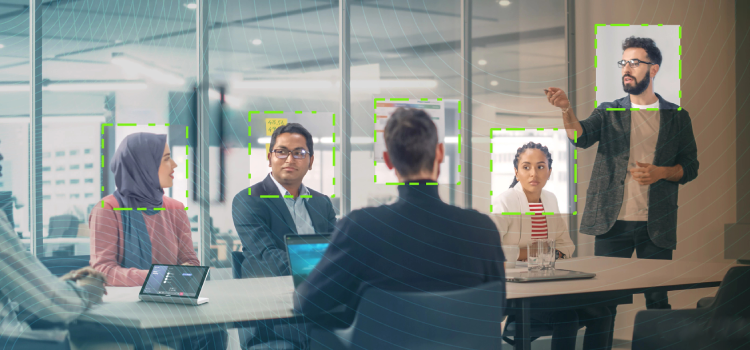
The age of AI is thrilling. Everyone is racing to implement new tools to improve security, reduce costs, increase productivity, and more. It’s a technological gold rush. And the timing couldn’t be better with organizations standardizing hybrid work models. AI is banging on the door to conference rooms everywhere. It's what we in the UCC industry call the perfect storm of AI and AV.
The truth is hybrid work isn’t perfect. Remote workers have been dealing with poor audio and video quality from their in-office collaborators.
We've learned the hard way how much poor image clarity diminishes gestures, expressions, and all the other nonverbal cues during a meeting. Not surprisingly, this has had a negative impact on productivity.
So, how can AI in AV help bridge the gap between remote workers and in-room participants?
Visual AI Is the Answer
Intelligent video systems offer an elegant solution, dramatically improving the experience for remote viewers and in-room participants. They deliver broadcast-quality video automatically, with no need for manual video switching or camera operation. Intelligent video — driven by “Visual AI” — can capture all the gestures, expressions, and nonverbal cues from every active speaker, anywhere in the room.
Visual AI systems provide a number of experiences, including group framing, presenter tracking, speaker tracking, and more.
Group Framing
Karin M. Reed, CEO of Speaker Dynamics and co-author of the book “Suddenly Hybrid,” shared an experience on the Crestron blog that is probably familiar to many people:
“I was leading a meeting from within a conference room, but the only technology available was an extra laptop, which was situated on the table. There was no monitor to allow the in-room attendees to see the online attendees and vice versa. There was no way for them to interact at all.”
“While in-room attendees can usually see their remote counterparts’ faces well, sometimes it’s hard for virtual attendees to see the faces of the in-room attendees, especially if the room is large,” she notes.
Group framing overcomes many of these issues by keeping everyone in the frame. As people enter, exit, or move around the room, this feature ensures that everyone stays in the shot.
Presenter Tracking
Crestron’s Rony Sebok, director of product management — intelligent video, created the first presenter tracking solutions to record lectures at colleges and universities. The goal was to keep a lecturer in the frame of a video recording — no matter where the presenter moved about the stage.
Now, this technology is even more powerful. Presenter tracking detects when people enter a presentation area, frames them, and continues to track them in real-time. It’s ideal for rooms with presentation areas — lecture halls, training venues, large conference rooms, and so on.
Speaker Tracking
This experience switches the view as the conversation moves from person to person in the space. Multi-camera speaker tracking solutions are superior to single-camera options here, as primary and secondary cameras allow for clean cuts between speakers.
A Future-Proof Solution
Visual AI-powered intelligent video systems are not only a low-risk option to increase productivity, they’re also a great foundation for your future AI technology stack. So, you can start having better meetings today while assuring stakeholders that you're preparing for the future.







